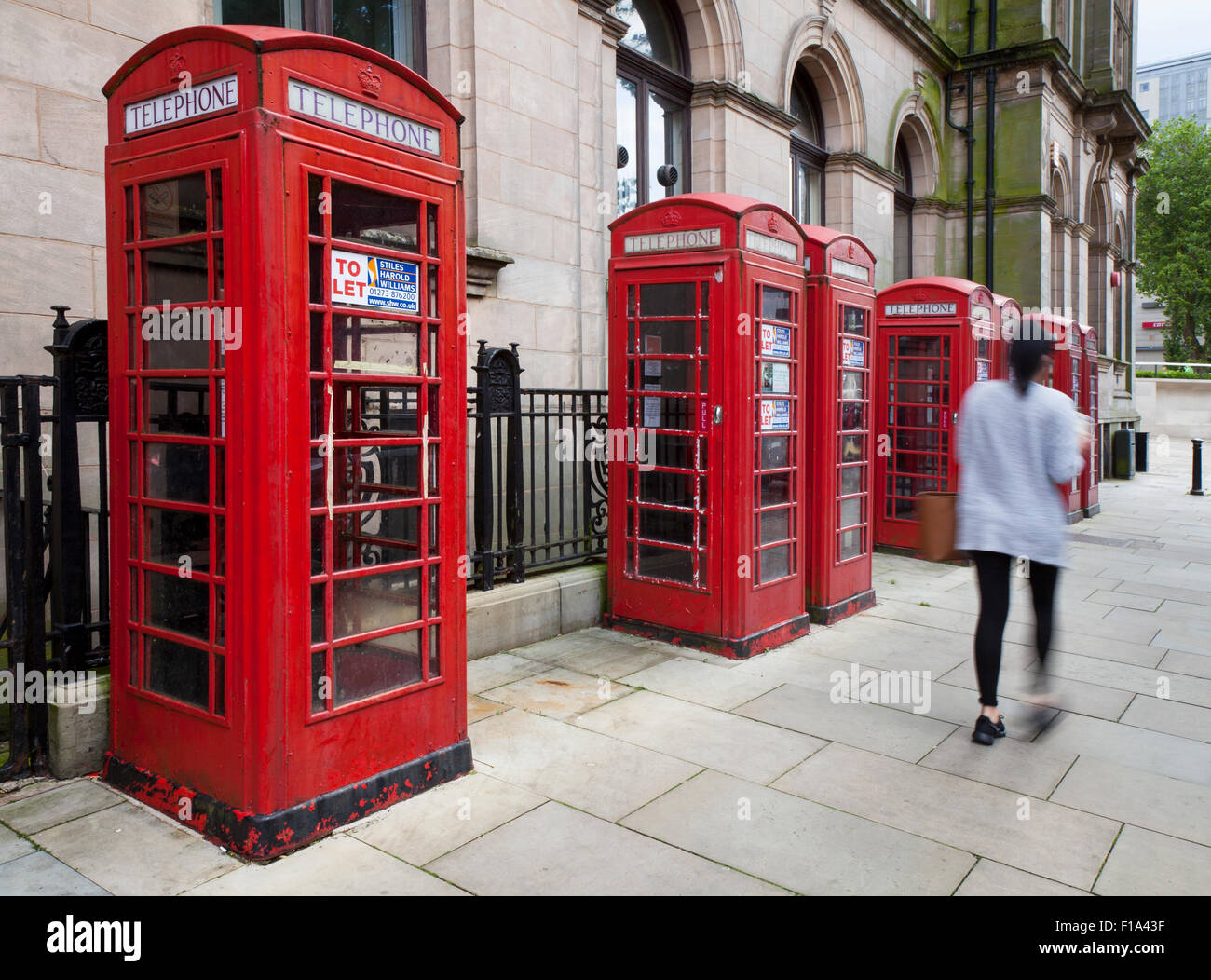People passing K6 Old type GPO, or BT red Telephone Boxes advertised as being 'To Let' with various uses being suggested by the agent. Preston, UK

Image details
Contributor:
MediaWorldImages / Alamy Stock PhotoImage ID:
F1A43FFile size:
53.7 MB (2.3 MB Compressed download)Releases:
Model - no | Property - noDo I need a release?Dimensions:
5034 x 3726 px | 42.6 x 31.5 cm | 16.8 x 12.4 inches | 300dpiDate taken:
29 August 2015Location:
Preston, Lancashire, UKMore information:
The K6 kiosk is identified as Britain's red Telephone Box; in fact eight kiosk types were introduced by the General Post Office between 1926 and 1983. The K6 was designed by Sir Giles Gilbert Scott to commemorate the Silver Jubilee of the coronation of King George V in 1935. Some 60, 000 examples were installed across Britain, which is why the K6 has come to represent the red Telephone Box. Over 11, 000 K6s remain and they are the most visible examples of the eight kiosk types. DESIGN The K6 kiosk is constructed of cast-iron sections, bolted together, standing on a concrete base. Its general form is a four-sided rectangular box with a domed roof. Three sides of the kiosk are glazed, with eight rows of three panes of glass; a wide central pane of glass and two outer, narrow panes. There is reeded molding around the window panel corresponding to the dimensions of the door opening, disguising that there is an opening on one side only. The door is of teak, with a metal "cup" handle. For weatherproofing there is a drip cap above the door. The back panel has a blank, molded panel conforming to the dimensions of the windows, and cable holes either side of the foundry plate at the foot of the kiosk. Above the main body of the kiosk is a plain entablature, set back from the face of the kiosk. The entablature carries a rectangular slot for signage, with trim molding. Set into the slot is an illuminated telephone sign, with serif capital lettering on opaque glass. Ventilation slots are inserted below the signage slot. The roof of the kiosk is domed, formed by segmental pediments, with a convex-molded edge. The pediments carry a molded Royal crown.